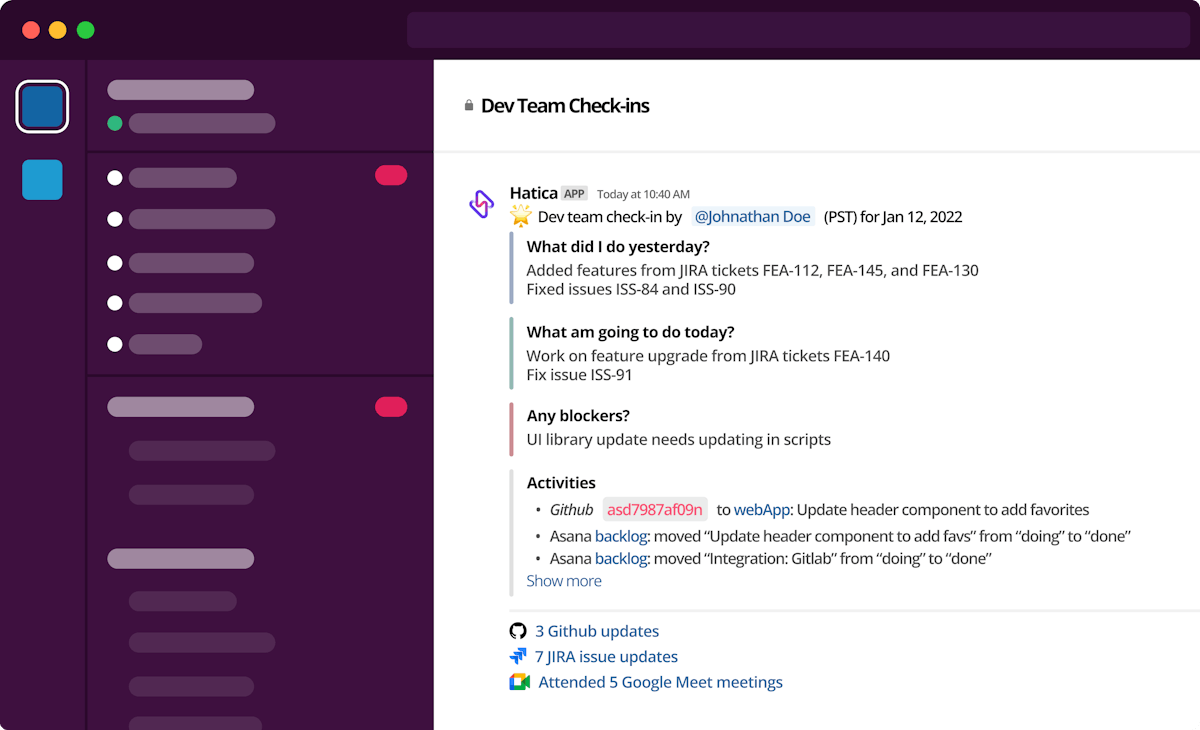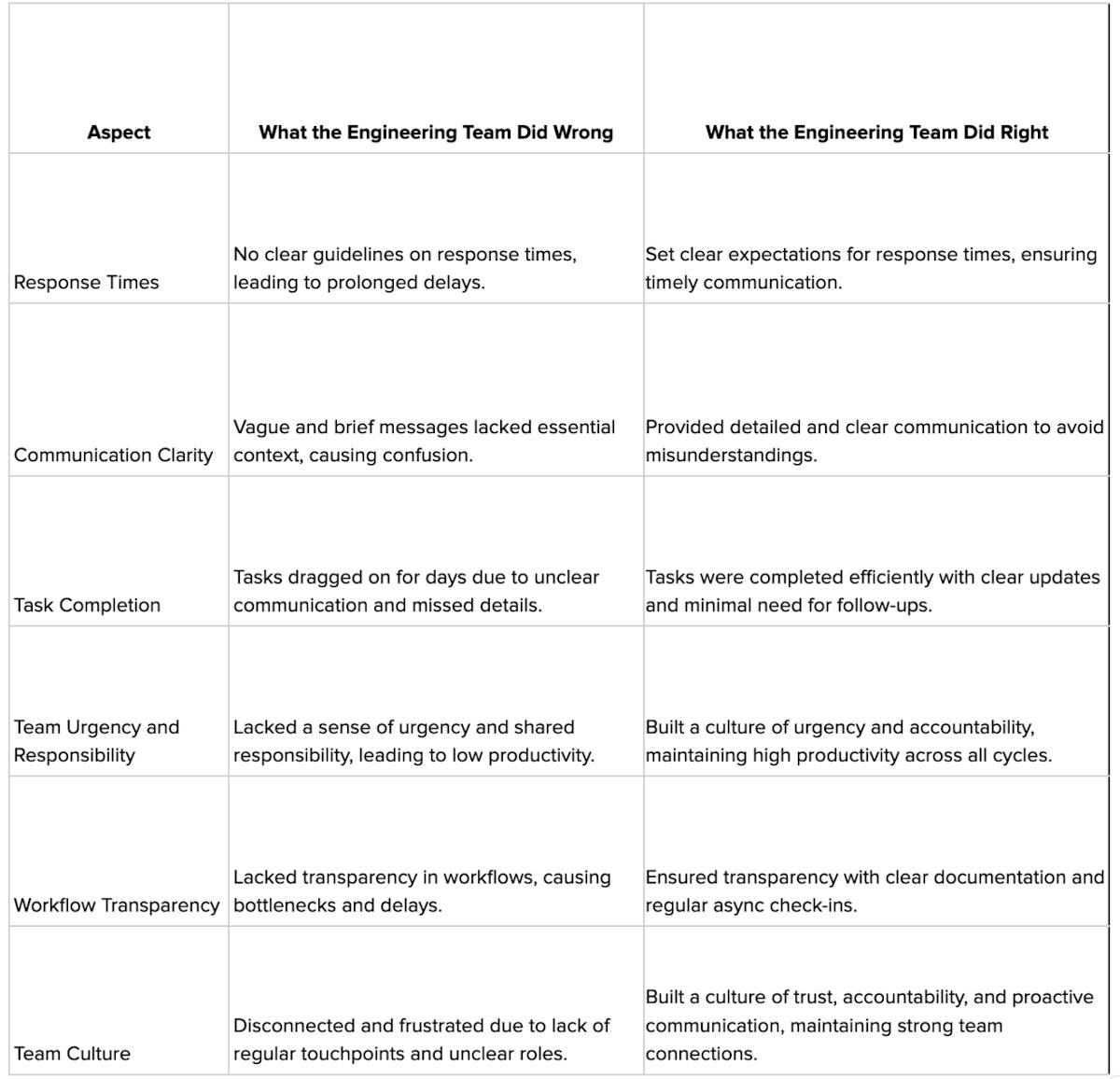The lines between asynchronous and collaborative work are increasingly blurring, especially as teams adopt hybrid and remote work models. Asynchronous work, with its flexibility and autonomy, allows team members to contribute at their own pace and on their own schedule.
While the more traditional, real-time collaboration brings immediate feedback and spontaneous problem-solving to the table, engineering teams are more distributed now for various reasons.
This becomes a problem statement as we want engineering teams to be more productive and involved without the benefit of face-to-face interactions. In our State of Engineering Productivity Report 2024, where we talked to over 200 engineering leaders around the world, we found that hybrid setups are now the toughest and most difficult to navigate.
Therefore in this blog, we'll delve into the nuances of these two workstyles and explore how to strike the perfect equilibrium for your engineering team.
So keep reading to learn how we can work on a balancing act!
The Perceived Challenges With Asynchronous Work
While asynchronous work allows individuals to be more productive by working when it suits them best, reducing the need to be constantly available and minimizing interruptions, it also comes with its own challenges. No strategy is completely foolproof, so let's address these potential issues upfront.
Relying too much on asynchronous work can sometimes slow down decision-making. There’s no technology that can fully replicate the rich, multi-dimensional experience of real in-person meetings. Without real-time discussions, the back-and-forth of emails or chat messages can extend conversations that could have been resolved quickly in a synchronous meeting.
Additionally, the lack of face-to-face interaction in an asynchronous setup can lead to feelings of isolation or disconnection from the team. Without the spontaneous exchanges that happen during synchronous collaboration, there’s a risk of losing the sense of camaraderie and shared purpose that drives team morale and productivity.
To balance these two approaches effectively, it’s important to be clear about why you're choosing the asynchronous route!
So let’s look at a scenario where an engineering team operates with the right mode for asynchronous work vs the wrong way.
💡Additional Read: Expert Insights on Leading Remote/Hybrid Engineering Teams
The Right vs. Wrong Way to Approach Asynchronous Work: A Tale of Two Engineering Teams
To truly understand the impact of asynchronous work on your engineering team, let’s explore two scenarios—one where the engineering team falls into common pitfalls and the other engineering team that strikes the right balance between asynchronous and synchronous work seamlessly.
Scenario 1: The Wrong Way to Approach Asynchronous Work
An engineering team that adopts asynchronous standups the wrong way is the one that goes into it without a clear strategy or an action plan.
How can you tell this?
Well, the writing is on the wall. This team lacks guidelines on response times, leading to delays as team members wait for days to receive critical feedback or updates. Their communication is often vague, with brief messages that omit important context.
They don’t use an engineering management platform, which could provide transparency in their workflows and keep the team aligned on what's happening regularly. Instead, they often resort to synchronous meetings to explain or justify blockers. This reactive approach turns tasks that should take hours into days-long struggles, with team members caught in endless Slack or Teams threads or constant calls just to resolve simple issues.
Even more concerning is the lack of urgency and shared responsibility, which a clear strategy typically instills. This leads to a drop in productivity and team morale. Without balancing asynchronous and synchronous collaboration, the team struggles to maintain momentum, and the lack of clear communication and regular sync points creates bottlenecks that slow progress and breed frustration.
The Key Takeaway
Looking at this engineering team, we can pinpoint three key mistakes they made when adopting an asynchronous work model:
- Lack of response time guidelines leads to delays
- Vague communication that creates confusion
- The absence of transparency tools that force unnecessary, last-minute meetings
Now let’s look at the way an engineering team approaches asynchronous work the right way.
💡Additional Read: How Do Async Stand-ups Work in a Remote Setup?
Scenario 2: The Right Way to Approach Asynchronous Work
In this scenario, this engineering team has adopted asynchronous work with clear intentionality and well-defined strategies.
Here, senior leadership has prioritized a dispersed team model, understanding that effective asynchronous work is key to this approach. There’s a clear intention and goal behind this setup, making sure that everyone is aligned from the start.





